Advertisement
Review
Tom Cruise rides into the danger zone of solitude in 'Top Gun: Maverick'
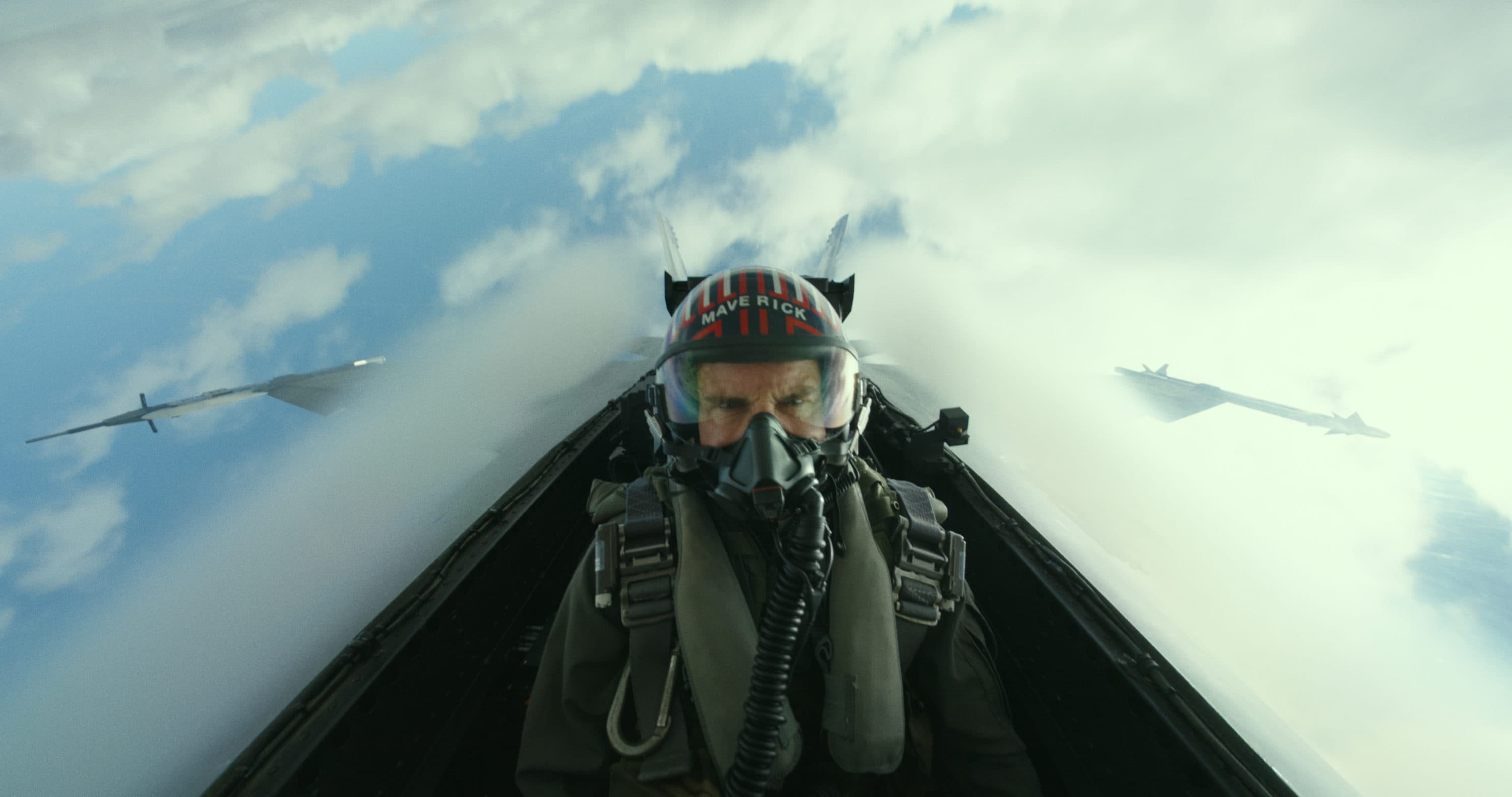
Tom Cruise is going to save the movies, even if it kills him. The daredevil superstar turns 60 in July, and with two more “Missions: Impossible” on deck he’s finally releasing “Top Gun: Maverick,” the long-delayed, 36-years-later sequel in which Cruise reprises his signature role as the smirking, cock-of-the-walk flyboy in aviator shades. It’s an outrageously entertaining picture, boasting some of the most exquisitely choreographed action sequences since “Mad Max: Fury Road” and a bruised-but-not-broken heart worn brazenly on its sleeve. This is the kind of massively-scaled, old-fashioned crowd-pleaser you probably thought Hollywood forgot how to make. Because they did.
The movie, like its main character, is an outlier — a relic from another era somehow still buzzing the tower of a world that’s passed it by. As Ed Harris’ none-too-happy admiral says in the prologue, “The end is inevitable, Maverick. Your kind is headed for extinction.” Nicknamed “the Drone Ranger,” Harris is putting pilots out to pasture and has little patience for aging hotshots like Maverick. Since every Tom Cruise movie is to some extent or another a movie about Tom Cruise, it’s not much of a stretch to see the admiral pulling the plug on manned aircraft programs as a stand-in for the Hollywood studios’ pivot to streaming services and Cruise’s old colleagues settling comfortably into television careers.
This bravura opening sequence — a nifty little mini-movie of its own before the story proper starts — finds Cruise’s character performing an incredibly brave and stupid stunt, breaking orders and putting his life on the line to prolong the careers of his co-workers and crew, so they can all keep flying for just a little while longer. That’s “Top Gun: Maverick” in a nutshell. It’s not just a summer movie, but an act of faith in big-screen entertainment and old-school cinematic virtues that have become sadly outmoded in this degraded age of comic book multiverses and sloppy CGI sludge made to be watched on your phone. The clarity and classical craftsmanship of this film feel like anachronistic acts of defiance against contemporary blockbuster practices. As Cruise replies to Harris when taunted about his impending obsolescence, “Maybe so, sir. But not today.”
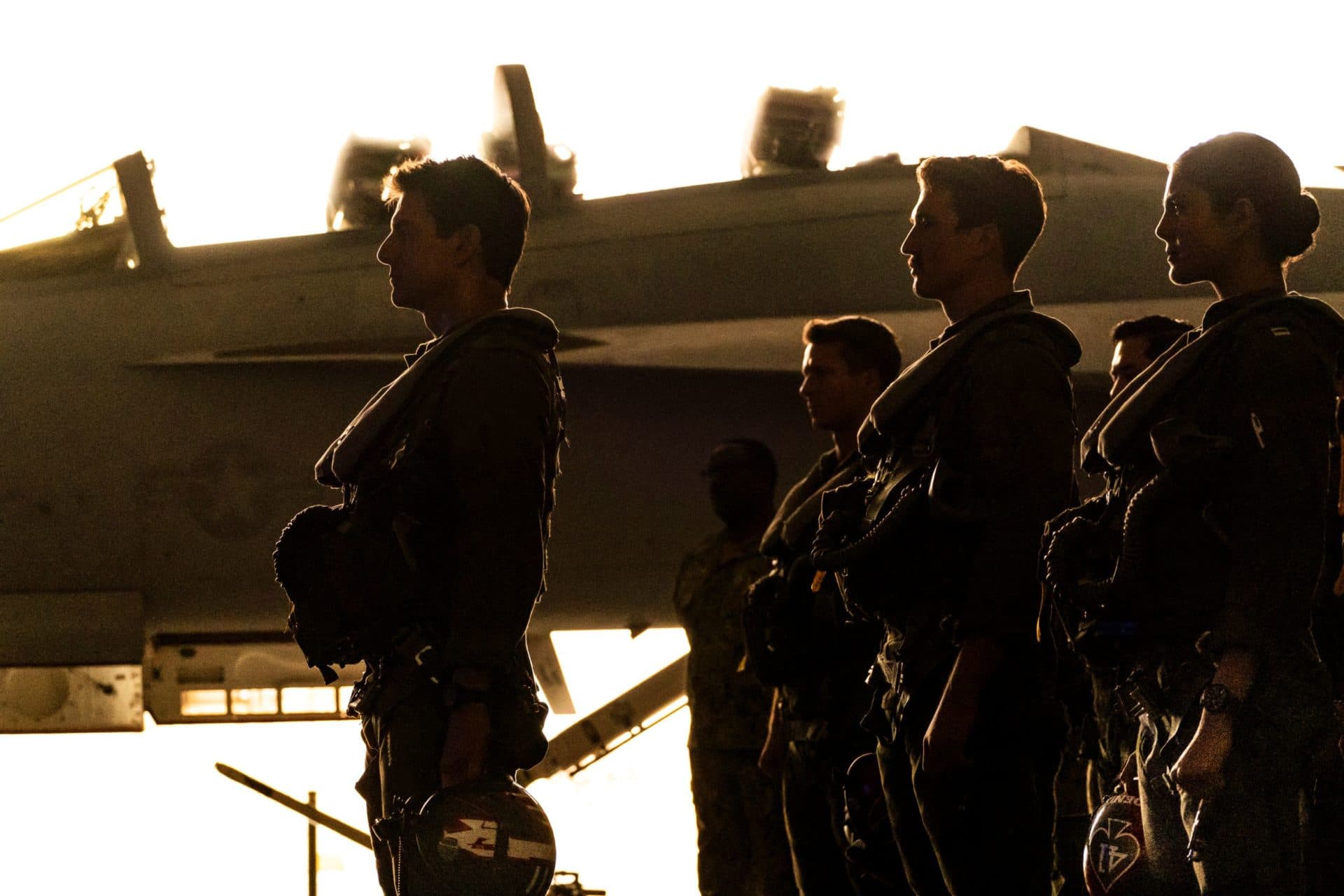
His latest act of insubordination might be Maverick’s last. Issues with authority over the years have kept him from ever progressing past captain, and he’s only still allowed in the Navy thanks to the semi-regular interventions of his classmate and former rival/hetero love interest Iceman, who now commands the Pacific fleet. (Val Kilmer’s health problems have been quite movingly written into the role, and while he cannot for obvious reasons appear onscreen often, that original performance remains so iconic you still somehow hear his voice in your head whenever Ice and Mav are texting.) Our hero would be grounded for good this time, except desperate times call for desperate measures, and much to the dismay of the brass, Maverick is ordered back to his old alma mater for one final assignment to close out his career.
There’s some gibberish about an underground uranium-enriching lab in what’s described as “a rogue state” known only as “the enemy.” (In keeping with the “Top Gun” tradition of being strategically vague about who and where we’re supposed to be fighting, the villains still wear black face shields so we can’t even see their complexions.) The point is that it’s a heavily defended target that can’t be reached by drones, requiring intricate aerial acrobatics at dangerously low altitudes with vertiginous dives and drops and assorted other complex maneuvers with which the new generation of Navy pilots has little experience. This gives Maverick a matter of weeks to train a new crew of cocky kids for a seemingly impossible mission (sorry) from which he worries not everybody will be coming home.
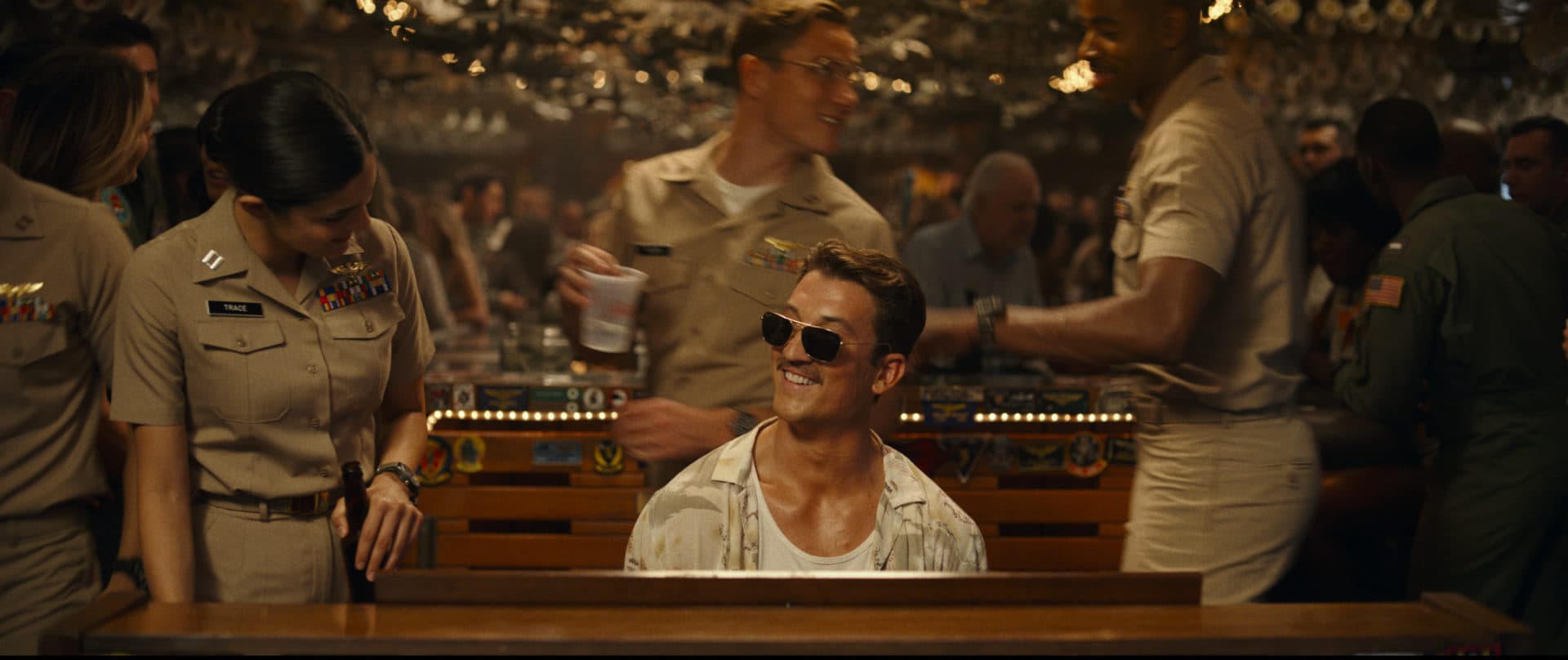
It’s a scenario similar to Clint Eastwood’s great “Heartbreak Ridge” — which coincidentally came out the same year as the original “Top Gun” — allowing a veteran star to test his mettle against some up-and-coming young whippersnappers and prove who’s still the boss. (Amusingly, both men were 56 years old when they shot these movies, yet Cruise somehow remains preserved in amber while Clint already looked older than dirt.) More importantly, it allows the star room to reflect on his advancing age and time passed by — something the preternaturally, insistently boyish Cruise has been loath to do onscreen before now.
“Top Gun: Maverick” is a surprisingly emotional experience in its evocation of the title character’s loneliness after a lifetime of burned bridges and breaking all the rules. With Cruise riding solo on his motorcycle and puttering around with old planes in an empty hangar, it seems the highway to the danger zone is a solitary one indeed. A wonderfully staged scene finds his class of new recruits bonding at a bar, busting each other’s chops and singing along to jukebox oldies. A lesser film would have found a way for Maverick to mix it up with the kids, but this one is content to let him look on, wistfully. Of all the things I expected from a “Top Gun” sequel, a melancholy undertow wasn’t one of them.
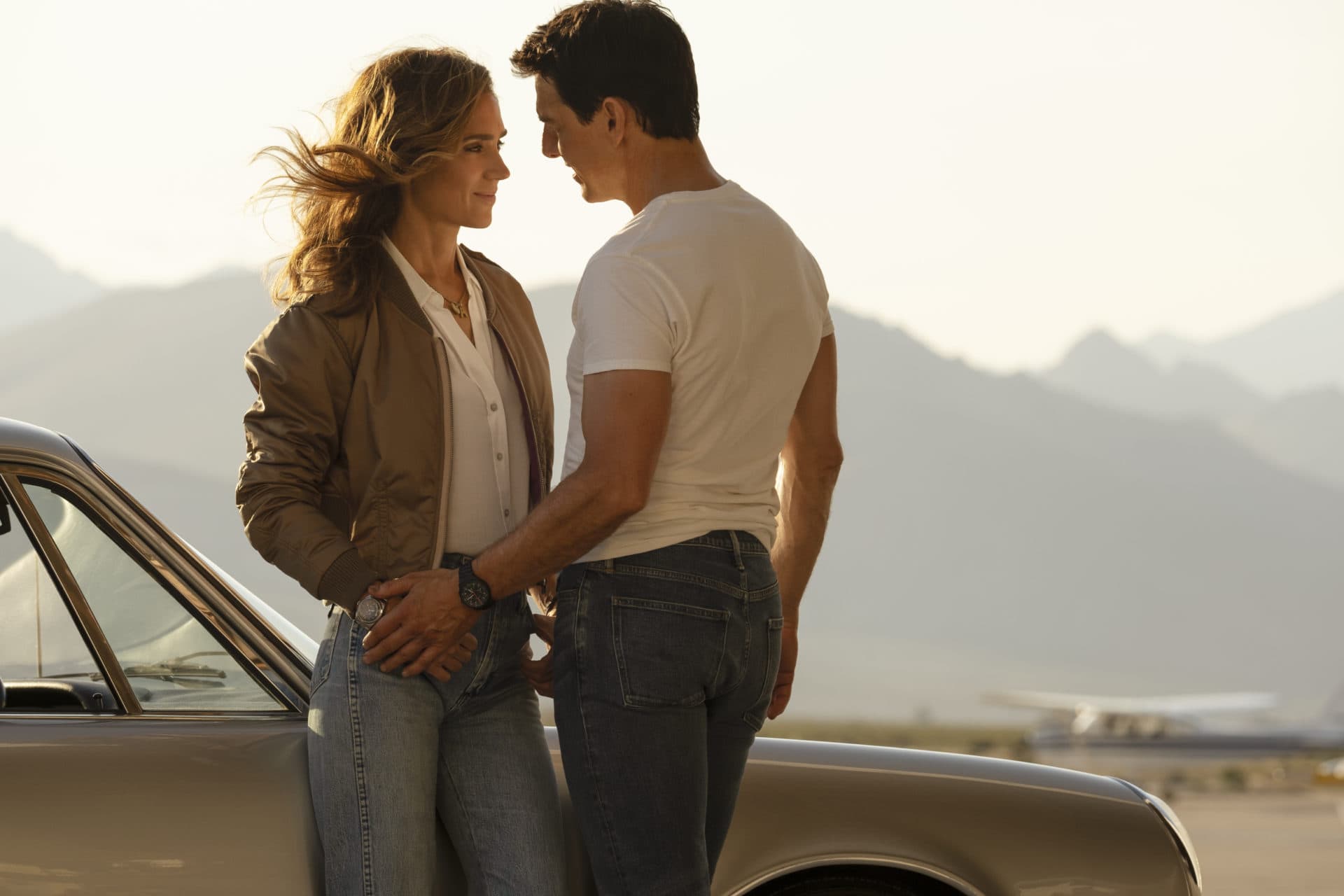
Maverick spends the movie haunted by ghosts of his past and the detritus of bad decisions. Foremost among them is Miles Teller’s resentful Rooster — son of his late sidekick Goose — a promising kid whose military career our guilt-ridden hero sabotaged because he couldn’t bear to see him put in harm’s way. There’s also a star-making turn from Glen Powell as Hangman, a swaggering know-it-all who physically resembles a mashup of Cruise and Kilmer back in 1986 and represents to Maverick everything he's come to hate about his younger, hot dog self. Finally, he’s reunited with Jennifer Connelly’s Penny Benjamin, the admiral’s daughter alluded to in the original film with whom our main character has conducted more than a few off-again-on-again flings over the ensuing decades, and his considerable charms have long ago worn off with her. (Connelly is terrific casting because not only can she hold her own against Cruise’s megawatt charisma, she’s likewise in her 50s yet still looks 35.)
Attempting to preside over all of this is Jon Hamm’s persnickety vice admiral, a perfect Margaret Dumont to Cruise’s cockpit Groucho. The man who Tina Fey once described on “30 Rock” as “looking like a cartoon of a pilot” spends the movie finding a thousand hilarious ways to be exasperated by Cruise and his refusal to do anything by the book. (In one of the movie’s more delightfully on-the-nose metaphors, Maverick begins the first day of class by tossing the flight manual into the trash.) Or maybe he’s just mad because nobody invited him to play shirtless touch football on the beach, during a winking reprise of the previous picture’s most notorious scene.
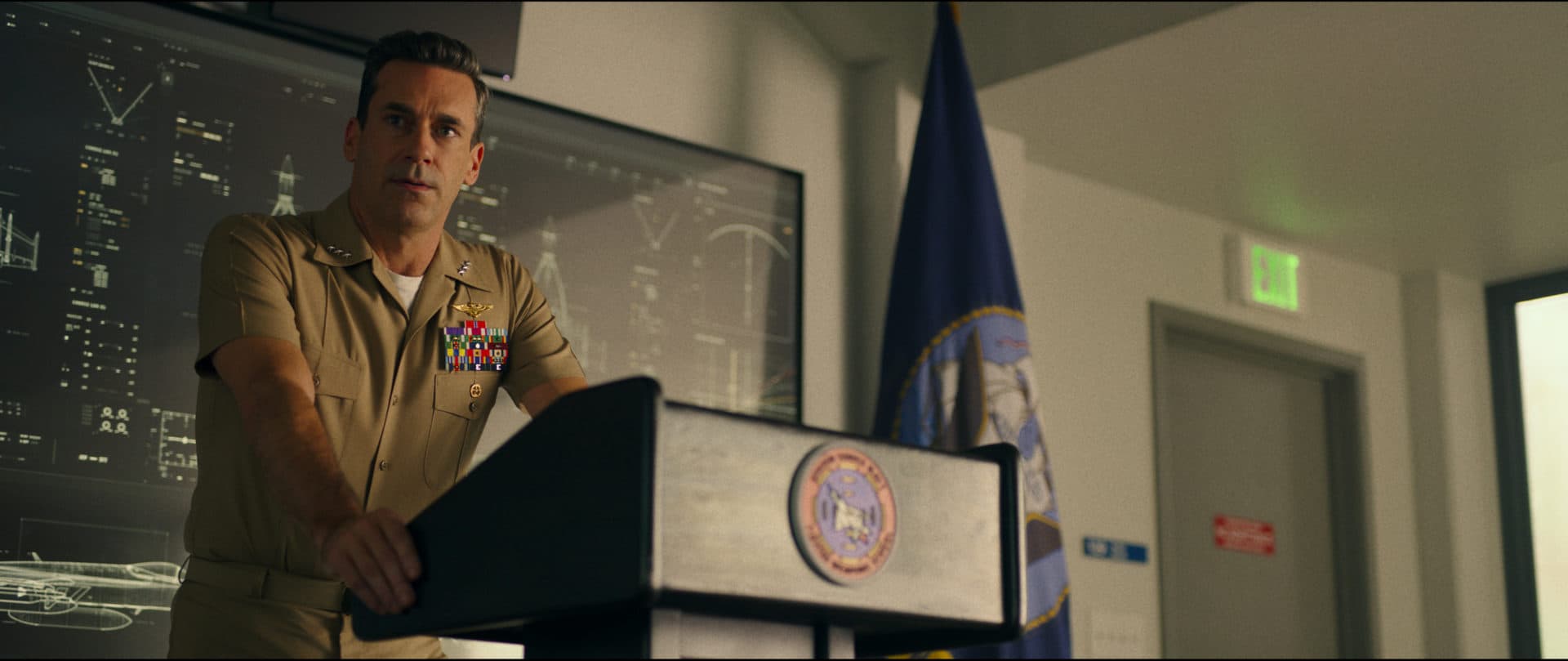
Director Joseph Kosinski doesn’t have the late Tony Scott’s lust for lacquered images, which is okay because the sequel is more of an actual movie instead of a commercial for being awesome. It’s got the easy camaraderie and rueful humor of an old Howard Hawks or a late-period Eastwood picture, which probably shouldn’t come as a surprise as Kosinski’s woefully underseen 2017 forest-firefighter drama “Only the Brave” (which also co-starred Connelly and Teller) borrowed all the right moves from Hawks’ “Only Angels Have Wings.” He brings an astonishing lucidity and precision to the midair stunt sequences, impeccably laying out the spatial geography at unfathomable speeds. Paramount put out a 50-page book for the press explaining all the unprecedented and insane efforts that were made to capture this footage over a shoot that began all the way back in 2018. But I didn’t want to read it, preferring to preserve the illusion of these breathtaking images whizzing by in IMAX. I’d rather believe my eyes.
Cruise is a believer, too. During the pandemic, it was reported that both Netflix and Amazon offered astronomical sums to stream the film, which the star vehemently vetoed, insisting that his baby be seen first exclusively on movie theater screens. If you buy what he claims in interviews, Cruise remains so in love with the moviegoing experience that he dons disguises and goes to multiplexes to watch films with regular audiences. (Everyone jokes about him wearing the “Mission: Impossible” pull-away prosthetics, but I prefer to imagine him at the mall watching “Morbius” in one of his old “Eyes Wide Shut” masks.) There’s no way Cruise could have known when they started shooting how much trouble theaters would be in by the time “Top Gun: Maverick” was finally released, but at a moment when even an alarming number of couch potato film critics are advocating for the end of the theatrical experience, it’s a relief to have an ally in The Last Movie Star.
“The world needs Maverick,” says a beloved character in the movie’s most shamelessly affecting moment. And the movie industry needs films like “Top Gun: Maverick” — big, splashy blockbuster entertainments to remind audiences that it doesn’t all have to be strange doctors and spider-men setting up Disney+ spinoff series in front of greenscreens on Atlanta soundstages. Sure, I could quibble about some choppy scene transitions and the hurried feel of the film’s first hour, but the fact remains that the last 45 minutes or so of this movie made me so ridiculously happy I couldn’t stop kicking the chair in front of me at the press screening. Apologies in advance to anyone who gets stuck sitting near me at future showings.
